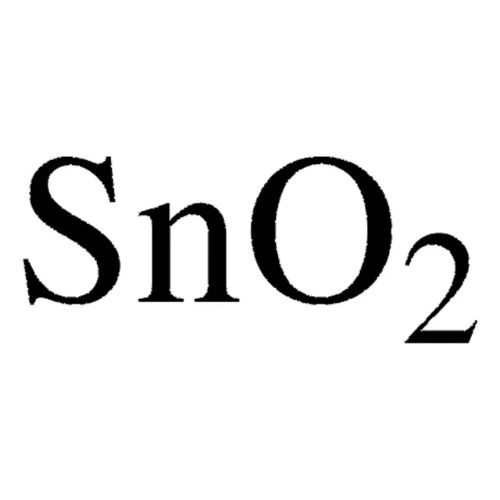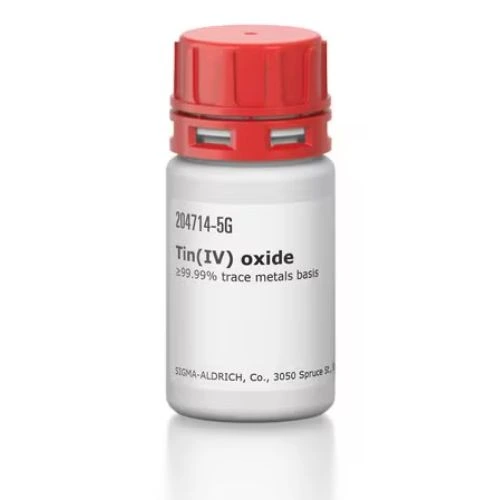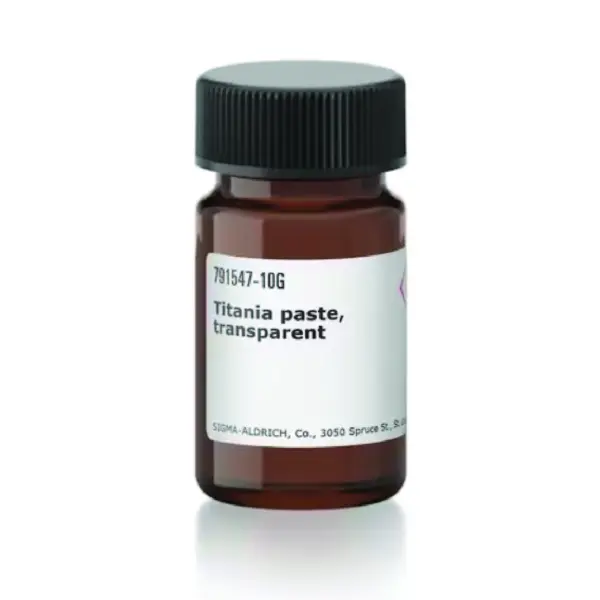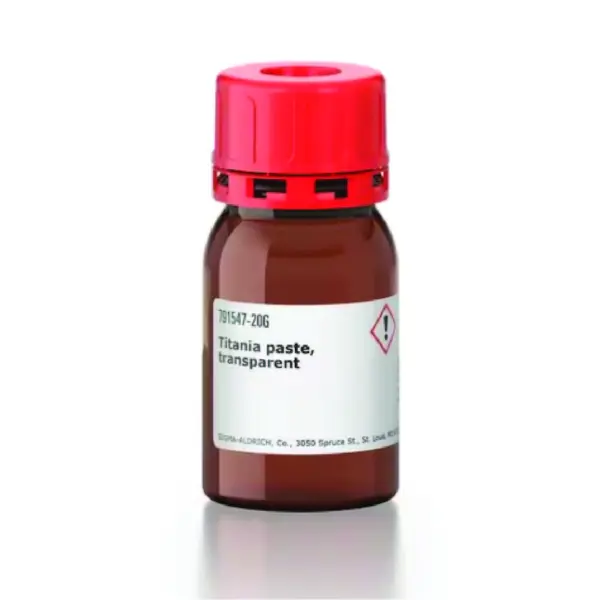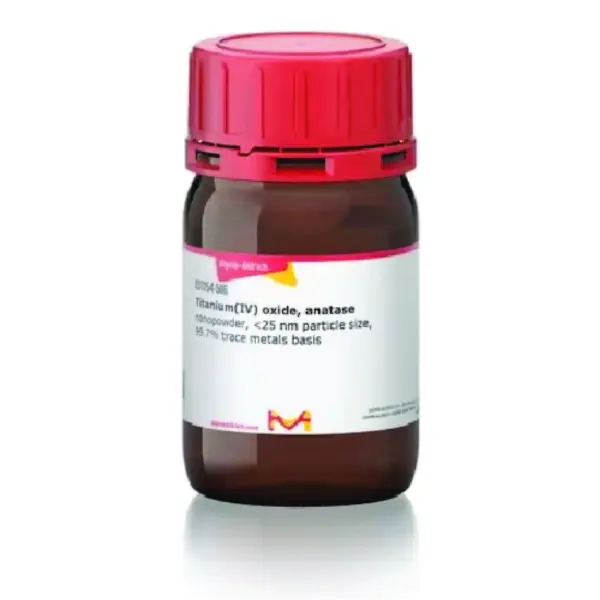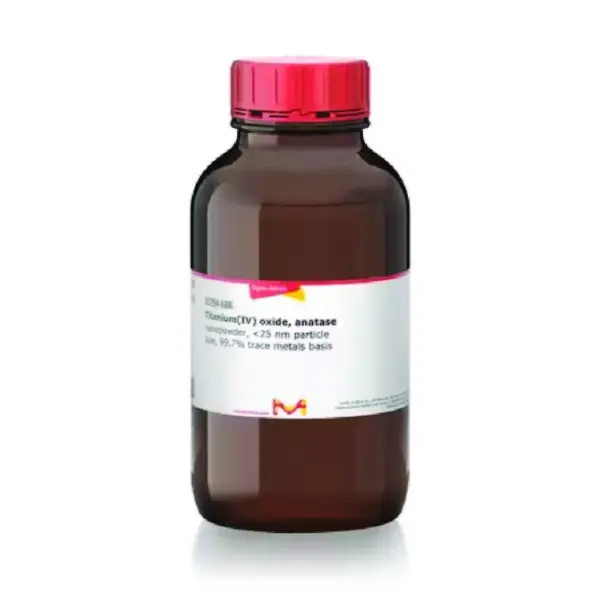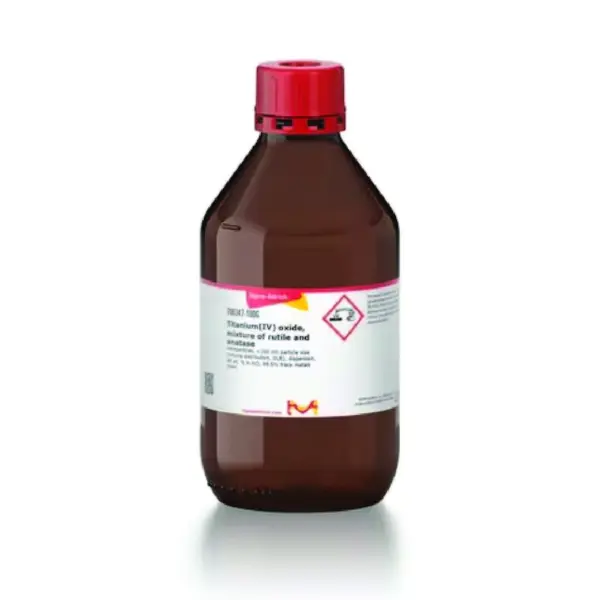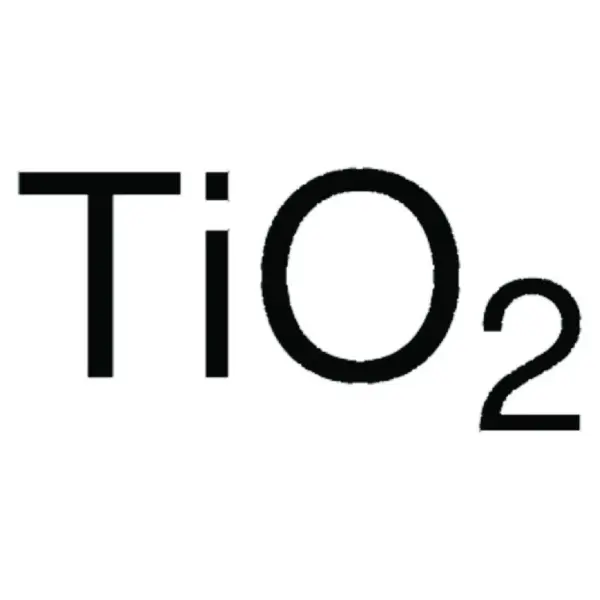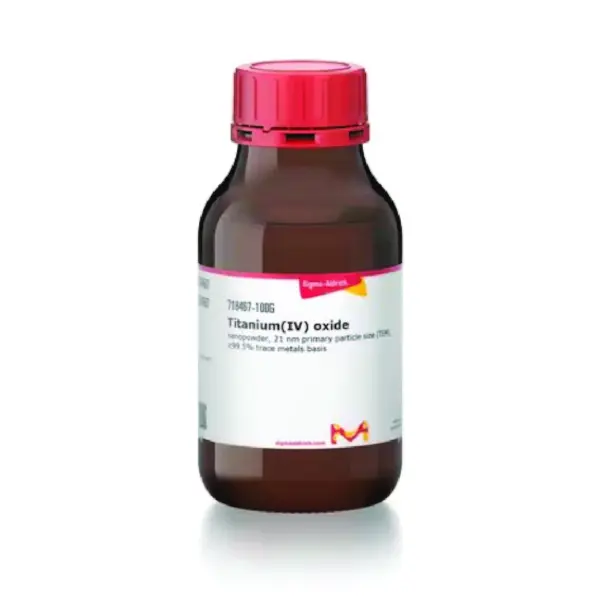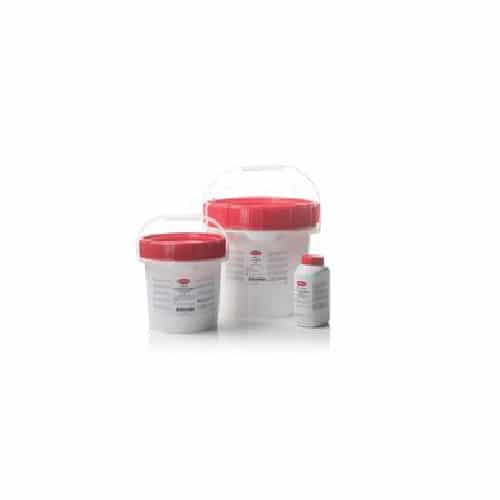
Thioglycollate Broth Usp Alternative
RM467.00Brand:
Thermo ScientificTM OxoidTM
Thioglycollate Medium USP – Alternative, is intended for sterility testing with certain biological products that are turbid or otherwise do not lend themselves readily to culturing in Thioglycollate Medium USP (CM0173) because of its viscosity.
Thioglycollate Medium USP – Alternative, Oxoid Composition
| Typical Formula* | gm/litre |
| L-cystine | 0.5 |
| Sodium chloride | 2.5 |
| Glucose | 5.5 |
| Yeast extract | 5.0 |
| Pancreatic digest of casein | 15.0 |
| Sodium thioglycollate | 0.5 |
| pH 7.1 ± 0.2 @ 25°C |
Thioglycollate Medium USP – Alternative, Oxoid Preparation:
Suspend 29g in 1 litre of distilled water. Bring to the boil and dissolve the medium completely. Distribute into tubes or bottles and sterilise by autoclaving at 121°C for 15 minutes.
PREPARE FRESHLY OR BOIL AND COOL THE MEDIUM JUST BEFORE USE.
Storage conditions and Shelf life
Store the dehydrated medium at 10-30°C and use before the expiry date on the label.
Whilst storage of the prepared medium is not recommended, autoclaved volumes of Thioglycollate Medium USP – Alternative, should be held at 20-30°C in the dark. Storage at lower temperatures increases oxygen absorption.
Precautions
This medium lacks agar and reducing indicator, therefore it is essential that the medium is freshly prepared and used within four hours of preparation.
Thioglycollate media should not be reheated more than once because toxic oxygen radicles are formed on reheating.

Thioglycollate Fluid Medium Usp 500g
RM331.00Brand:
Thermo ScientificTM OxoidTM
Cultivate aerobic and anaerobic organisms in the performance of sterility tests with Thermo Scientific™ Oxoid™ Thioglycollate Medium (USP) (Dehydrated). The medium is prepared according to the formula specified in the US Pharmacopoeia for the performance of sterility tests, and conforms to formulations detailed in the British and European Pharmacopoeia.
Thioglycollate Medium (USP) (Dehydrated), Oxoid Composition
| Formula | gm/litre |
| Yeast extract | 5.0 |
| Tryptone | 15.0 |
| Glucose | 5.5 |
| Sodium thioglycollate | 0.5 |
| Sodium chloride | 2.5 |
| L-cystine | 0.5 |
| Resazurin | 0.001 |
| Agar | 0.75 |
| pH 7.1 ± 0.2 @ 25°C |
Thioglycollate Medium (USP) (Dehydrated), Oxoid Preparation:
Suspend 29.75 g in 1 litre of distilled water. Bring to the boil to dissolve completely. Distribute into final containers, sterilise by autoclaving at 121°C for 15 minutes. Mix well and cool to room temperature.
Storage conditions and Shelf life
Store the dehydrated medium at 10-30°C and use before the expiry date on the label.
Store the prepared medium away from light at room temperature.
Precautions
If the upper portion of the medium is red because of oxidation, anaerobic conditions can be restored by reheating for 10 minutes in boiling water or steam. Do not reheat more than once.
Following reheating, if more than one-third of the medium is oxidised then it should be discarded.
Some glucose-fermenting organisms which are able to reduce the pH of the medium to a critical level may not survive in this medium. Early subculture is necessary to isolate these organisms.
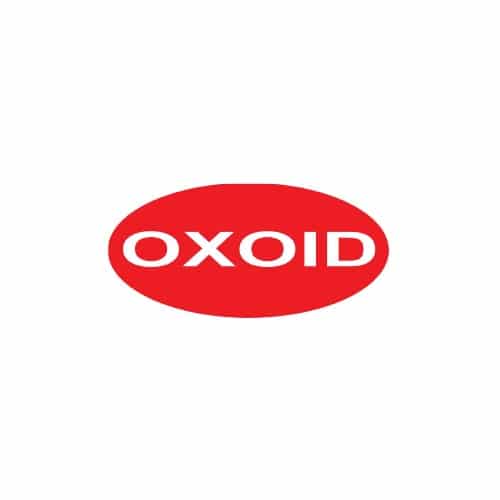
Thioglycollate Medium (acc. to EP/USP)
RM348.00Brand:
Thermo ScientificTM OxoidTM
Thermo Scientific™ Oxoid Thioglycollate Medium is tested according to EP/USP.
Thioglycollate Medium, Oxoid Composition
| Formula | gm/litre |
| Yeast extract | 5.0 |
| Tryptone | 15.0 |
| Glucose | 5.5 |
| Sodium thioglycollate | 0.5 |
| Sodium chloride | 2.5 |
| L-cystine | 0.5 |
| Resazurin | 0.001 |
| Agar | 0.75 |
| pH 7.1 ± 0.2 @ 25°C |
Thioglycollate Medium, Oxoid Preparation:
Suspend Thioglycollate medium (29.75 grams/ 1itre) in de-ionised water. Heat to dissolve. Cool and dispense 100ml into final containers, 100ml DIN bottles. Sterilise at 121°C for 15 minutes. When cooled label each bottle and pack in units of 10 into labelled boxes.
Storage conditions and Shelf life
Store away from light between 2-25ºC. Product shelf life from date of production is 1 year.
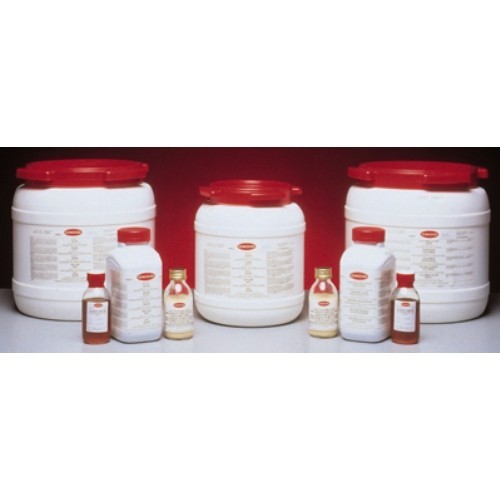
Thioglycollate Medium (Brewer) 500g, Oxoid
RM0.00Brand:
Thermo ScientificTM OxoidTM
This product has been discontinued. The alternative product is Thioglycollate Fluid Medium USP (CM0173).
Oxoid Thioglycollate Medium, Brewer is an anaerobic medium especially useful for sterility control of solutions containing mercury-based preservatives.
Thioglycollate Medium, Brewer, Oxoid Composition
| Typical Formula* | gm/litre |
| `Lab-Lemco’ powder | 1.0 |
| Yeast extract | 2.0 |
| Peptone | 5.0 |
| Glucose | 5.0 |
| Sodium chloride | 5.0 |
| Sodium thioglycollate | 1.1 |
| Methylene blue | 0.002 |
| Agar | 1.0 |
| pH 7.2 ± 0.2 |
Thioglycollate Medium, Brewer, Oxoid Preparation:
Suspend 20g in 1 litre of distilled water. Bring to the boil, mix well and allow to stand until completely dissolved. Distribute into final containers and sterilise by autoclaving at 121°C for 15 minutes.
Media containing small quantities of agar are liable to separate if cooled rapidly. Tubes of reconstituted and autoclaved medium should be allowed to cool slowly on a wooden surface in a draught-free atmosphere.
Storage conditions and Shelf life
Store the dehydrated medium at 10-30°C and use before the expiry date on the label.
The prepared medium should be stored away from light at room temperature.
Precautions
Check the upper portion of the prepared medium before inoculation. If more than one-third of the fluid is oxidised i.e. green coloured, discard the bottle.
If one-third or less fluid is oxidised, then heat in boiling water with the cap loosened to drive off oxygen. Cool to room temperature before inoculation. This reheating process can only be carried out once because of the formation of toxic radicles in the medium.
Organisms which ferment glucose and lower the pH to critical levels may not survive in this medium after growth has taken place.

Thiosulphate Ringers Tablets
RM0.00Brand:
Thermo ScientificTM OxoidTM
- Oxoid Thiosulphate Ringers Tablets is used for preparation of isotonic diluents for bacterial cells and bacteriological specimens.
- Each tablet prepares 500mL solution.
Thiosulphate Ringers Tablets, Oxoid Composition
| Formula | gm/litre |
| Sodium chloride | 2.15 |
| Potassium chloride | 0.075 |
| Calcium chloride 6H2O | 0.12 |
| Sodium thiosulphate 5H2O | 0.5 |
* Due to the low ionic content of this medium no pH is specified.
One tablet makes 500ml of quarter-strength Ringer containing 0.05% of sodium thiosulphate.
Thiosulphate Ringers Tablets, Oxoid Preparation:
To prepare quarter-strength Ringer Solution containing thiosulphate, dissolve 1 tablet in 500ml distilled water. Sterilise by autoclaving at 121°C for 15 minutes.
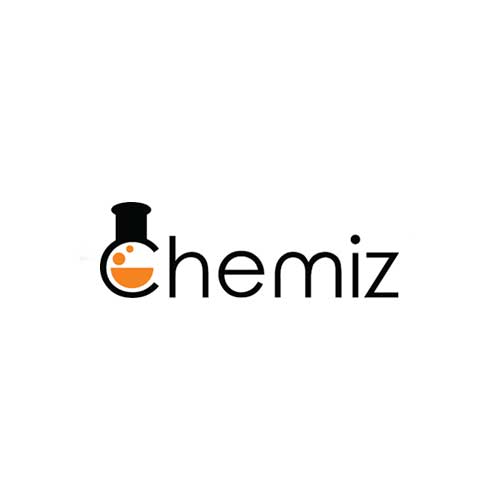
Thiourea CP, 500g
RM33.00Brand:
Chemiz
Description
Synonyms: Thiocarbamide
Formula: CH4N2S
Thiourea is an analogue of urea that contains sulphur. Thiourea has been used in protein analysis as ice cold sample buffer. It has the ability increase the solubility and recovery of proteins.
Note:
AR: Analitycal Reagent Grade: Reagents for analytical purpose or research work that need high purity.
CP: Chemically Pure Grade: Reagents for regular practical in its original purity.

Tic75 Ticarcillin
RM0.00Brand:
Thermo ScientificTM OxoidTM
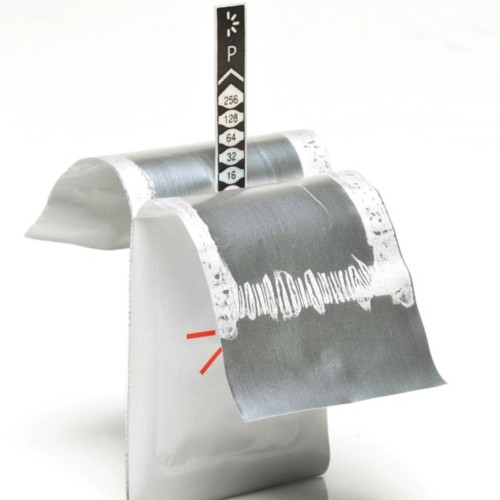
Tigecyclin 256 MICE (50 pack)
RM0.00Brand:
Thermo ScientificTM OxoidTM
**This product is not available at the moment.
Effortlessly establish accurate Minimum Inhibitory Concentration (MIC) values manually using Thermo Scientific™ Oxoid™ Tigecycline M.I.C.Evaluator Strips (M.I.C.E.™).

Tigecycline 256 MICE (pack of 10)
RM0.00Brand:
Thermo ScientificTM OxoidTM
**This product is not available at the moment.
Effortlessly establish accurate Minimum Inhibitory Concentration (MIC) values manually using Thermo Scientific™ Oxoid™ Tigecycline M.I.C.Evaluator Strips (M.I.C.E.™).

TIL15 Tilmicosin 15µG
RM84.00Brand:
Thermo ScientificTM OxoidTM
Manually determine the antibiotic susceptibility of microorganisms using Antimicrobial Susceptibility Testing (AST) methods in conjunction with reliable, easy-to-use Thermo Scientific™ Oxoid™ Tilmicosin Antimicrobial Susceptibility Disks.

Tim85 Ticarcillin/Clavulanic Acid
RM0.00Brand:
Thermo ScientificTM OxoidTM
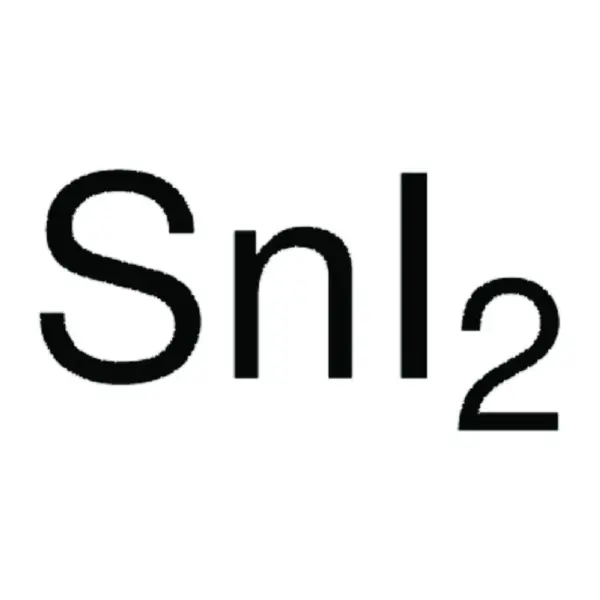
Tin(II) iodide, AnhydroBeads™, −10 mesh, 99.99% trace metals basis (Sigma-Aldrich)
Price range: RM1,019.00 through RM3,180.00Brand:
Sigma-Aldrich
Synonyms
Stannous iodide, Tin diiodide
General Description
Tin(II) iodide AnhydroBeads™−10 mesh, 99.99% trace metals basis, comes as beads with red to purple in colour with applications in semiconductor research, solar cells, material science, chemical synthesis, catalysis, and photonics. Tin (II) iodide is widely used as a precursor to prepare lead-free, non-toxic hybrid perovskite materials. Tin-based perovskites show excellent electrical and optical properties such as high charge carrier mobility, absorption coefficient, and small exciton binding energies.
Applications
Tin(II) iodide (SnI₂) is a versatile compound with a range of applications in research, particularly in semiconductor technology, solar cells, chemical synthesis, catalysis, etc. SnI₂ is used in perovskite solar cells as a precursor for tin-based perovskites or as an additive to improve device stability and performance. The addition of a small amount of 2D tin film induces well-defined orientation and superior crystallinity in formamidinium tin iodide (FASnI3) films. This results in the longer life of charge carriers and improves the performance of the hybrid perovskite solar cell (HPSC). It can also be used to prepare solution-processable lamellar hybrid
[CH3(CH2)11NH3]SnI3semiconductor.Its catalytic properties can be leveraged to develop new synthetic methodologies such as reductions, cyclisations, and coupling reactions. It is suitable to be use in photonic applications, including sensors and photovoltaic devices. It is used as a deposition material for preparing thin films for use in electronic and optoelectronic devices. Techniques like chemical vapour deposition (CVD) and physical vapour deposition (PVD) are explored for creating high-quality films. In a study, it is found that when a novel catalytic system comprised of tin sulfide (SnS) nanoflakes as a solid catalyst and tin iodide (SnI2) as a dual-functional electrolyte additive, the Li-air battery enables operating at high current rates up to 10 000 mA g−1 (corresponding to 1 mA cm−2). Also it has been observed that that the role of the SnI2 is not only reacting with the lithium anode to provide protection but reducing the charge potential by promoting catalytic decomposition of the Li2O2.
Features & Benefits
Tin(II) iodide AnhydroBeads™, −10 mesh, 99.99% trace metals basis is designed and tested under stringent dry manufacturing conditions to ensure low water content, trace metal purity of 99.99%, and low surface area-to-volume ratio. The salt possesses excellent electrical and optical properties such as high charge carrier mobility, absorption coefficient, and small exciton binding energies. The advantages of our AnhydroBeads™ salts are as follows:
1) Reduced uptake rate of environmental moisture minimises caking, dusting, and static buildup for repeated easy handling.
2) Higher crucible packing densities and lower volatility in high-temperature solid-state procedures.
3) Easier pneumatic loading of salts to sample chambers due to fewer clogging issues associated with powdered salt counterparts.
Legal Information
AnhydroBeads is a trademark of Sigma-Aldrich Co. LLC
| CAS Number | 10294-70-9 |
| Empirical Formula | SnI2 |
| Molecular Weight | 372.52 |
| Reaction suitability | Core: Tin |
| Assay | 99.99% trace metals basis |
| Impurities | ≤150.0 ppm Trace Metal Analysis |
| Particle size | −10 mesh |

Tin(IV) oxide nanoparticle ink, 2.5 wt%, viscosity 3.5 cP – Sigma-Aldrich
Price range: RM817.00 through RM2,501.00Brand:
Sigma-Aldrich
Synonyms
Avantama N-31, Ink for charge selective layers in printed electronics, SnO2 ink, Tin oxide nanoparticle dispersion
Cas No.
–
Application
- This SnO2 nanoparticle ink is for charge selective layers in printed electronics.
- This SnO2 nanoparticle ink is for spin-coating, doctor blading, slot-die or inkjet printing.
Legal Information
Product of Avantama Ltd.
Disclaimer
- Storage: In dark at room temperature.
- Prior to application: Shake, and filter through 0.2 or 0.45 μm PP filter. Do not use PTFE filter.
- Ink can be diluted with butanol.
- Thickness optimization may be necessary.
- Drying of deposited SnO2 films at >100 °C.
Tin(IV) oxide, ≥99.99% trace metals basis – Sigma-Aldrich
Price range: RM898.00 through RM3,219.00Brand:
Sigma-Aldrich
Synonyms
Stannic dioxide, Tin dioxide, Stannic oxide
Cas No.
18282-10-5
General description
Tin(IV) oxide, also known as stannic oxide, is a yellow-green powder that crystallizes in the rutile structure. It is a wide bandgap (3.6 eV) semiconductor with high transparency in the visible range of the electromagnetic spectrum and relatively high electronic conductivity. Its chemical stability and high purity of ≥99.99% trace metals basis make it suitable for use in demanding conditions, such as semiconductor and biomedical applications, where it is widely used in medical imaging devices, biosensors, and diagnostic tools. It is also utilized in battery technologies, including lithium-ion batteries, as a conversion-type anode material due to its high energy storage capacity and stability and a precursor for making tin compounds and complex metal oxides.
We are committed to bringing you Greener Alternative Products, which belong to one of the four categories of greener alternatives. Tin oxide enhances lithium-ion batteries with high energy density, improved cycling stability, and efficient charge/discharge rates, supporting more sustainable energy storage. Click here for more information.
Application
Fluorinated Cation-Based 2D Perovskites for Efficient and Stable 3D/2D Heterojunction Perovskite Solar Cells.: This research explores the application of tin(IV) oxide in creating efficient and stable perovskite solar cells, focusing on the improvement of the solar cells′ overall performance (Shaw PE et al., 2023).
Tin(IV) Oxide Electron Transport Layer via Industrial-Scale Pulsed Laser Deposition for Planar Perovskite Solar Cells.: The study discusses the use of tin(IV) oxide as an electron transport layer applied through industrial-scale pulsed laser deposition, enhancing the functionality and efficiency of planar perovskite solar cells (Bolink HJ et al., 2023).
Periodic Acid Modification of Chemical-Bath Deposited SnO2 Electron Transport Layers for Perovskite Solar Cells and Mini Modules.: This paper presents a methodology for the modification of SnO2 electron transport layers, used to increase the efficiency of perovskite solar cells and mini-modules (Lin H et al., 2023).
Zwitterion-Functionalized SnO2 Substrate Induced Sequential Deposition of Black-Phase FAPbI3 with Rearranged PbI2 Residue.: Research on enhancing the deposition of black-phase FAPbI3 on zwitterion-functionalized SnO2 substrates, focusing on perovskite solar cell improvements (Zhao Y et al., 2022).
Improved stability and efficiency of polymer-based selenium solar cells through the usage of tin(iv) oxide in the electron transport layers and the analysis of aging dynamics.: The study investigates the role of tin(IV) oxide in enhancing the stability and efficiency of polymer-based selenium solar cells (Zhang Q et al., 2020).

Tinsdale Medium 500g
RM0.00Brand:
Thermo ScientificTM OxoidTM
Oxoid Tinsdale Agar Base is used for the isolation and identification of Corynebacterium diphtheriae.
Tinsdale Agar Base, Oxoid Composition
| Typical Formula* | gm/litre |
| Proteose peptone | 20.0 |
| Yeast extract | 5.0 |
| Sodium chloride | 5.0 |
| L-cystine | 0.24 |
| Agar | 15.0 |
| pH 7.9 ± 0.2 @ 25°C |
Tinsdale Agar, Oxoid Preparation:
Suspend 9g of agar base in 200ml of distilled water. Bring to the boil and dissolve completely. DO NOT AUTOCLAVE. Allow to cool to approximately 50°C and add the contents of one vial of Oxoid Tinsdale Supplement SR0065 reconstiuted as directed. Mix throughly and pour into sterile Petri dishes.
Storage conditions and Shelf life
Store the dehydrated medium at 10-30°C and use before the expiry date on the label.
Store the prepared medium at 2-8°C for not more than 4 days.
Precautions
Further tests must be carried out on colonies suspected as Corynebacterium diphtheriae, including cell morphology after sub-culture to Loeffler’s Medium and examination for toxin production.
Do not incubate Tinsdale’s Agar plates in enhanced CO2 atmosphere (5-10% v/v).
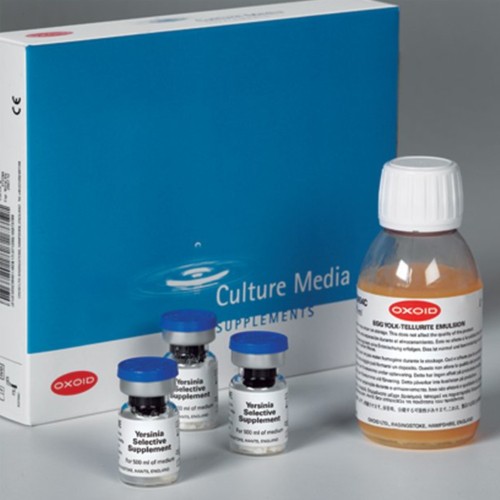
Tinsdale Supplement 1 x 10 Vials
RM0.00Brand:
Thermo ScientificTM OxoidTM
This product has been discontinued. Please contact us for more information.
Oxoid Tinsdale Supplement is used for the cultivation of Corynebacterium diphtheriae.
- A supplement for Tinsdale Medium, Part No. CM0487B
- Each vial supplements 200mL of medium
Tinsdale Supplement, Oxoid Composition
| Vial contents (each vial is sufficient for 200 ml of medium) | per vial | per litre |
| Serum equiv. | 20.0ml | 100.0ml |
| Potassium tellurite | 0.069g | 0.3445g |
| Sodium thiosulphate | 0.085g | 0.425g |
Tinsdale Agar, Oxoid Preparation:
Suspend 9g of agar base in 200ml of distilled water. Bring to the boil and dissolve completely. DO NOT AUTOCLAVE. Allow to cool to approximately 50°C and add the contents of one vial of Oxoid Tinsdale Supplement SR0065 reconstiuted as directed. Mix throughly and pour into sterile Petri dishes.
Storage conditions and Shelf life
Store the dehydrated medium at 10-30°C and use before the expiry date on the label.
Store the prepared medium at 2-8°C for not more than 4 days.
Precautions
Further tests must be carried out on colonies suspected as Corynebacterium diphtheriae, including cell morphology after sub-culture to Loeffler’s Medium and examination for toxin production.
Do not incubate Tinsdale’s Agar plates in enhanced CO2 atmosphere (5-10% v/v).
Titania paste, transparent – Sigma-Aldrich
Price range: RM1,284.00 through RM1,729.00Brand:
Sigma-Aldrich
Synonyms
Greatcell Solar®, TiO2 paste
CAS No
–
General Description
Transparent titania (TiO2) paste is a visual range transparent paste that has a large surface area to volume ratio. The average diameter of the TiO2 nanoparticle within the paste is 20nm and the transparent sintered films are around 6-7 μm thick per printed layer.
Application
TiO2 paste forms a screen printed film which is majorly used as a conduction band on indium tin oxide (ITO) or fluorine doped tin oxide (FTO) based substrates for dye sensitized solar cells and for major photovoltaic based applications.
Use Transparent Titania Paste in applications that require a transparent sintered titania film with a large surface/volume ratio.
Transparent Titania Paste is formulated to yield sintered film thicknesses of 6-7μm when screen printed with a 43T mesh. Transparent Titania Paste has highly dispersed and stable anatase nanoparticles.
It is optimised for screen printing using a synthetic 43T mesh screen (or similar). After drying; this paste must be fired at or above 500°C. This results in a transparent sintered layer; with a film thickness of approximately 6-7μm for one printed layer and ~12μm for two printed layers; when using a 43T mesh screen.
The paste exhibits optimal rheological properties that provide good surface uniformity and contains organic binders specially formulated to provide versatile porosity suitable for a range of dye/electrolyte systems.
Storage: Store in the dark at 20°C
Legal Information
Product of Greatcell Solar Materials Pty Ltd.Greatcell Solar is a registered trademark of Greatcell Solar Materials Pty Ltd.
Greatcell Solar is a registered trademark of Greatcell Solar
Titanium dioxide, anatase, nanopowder, <25 nm particle size, 99.7% trace metals basis - Sigma-Aldrich
Price range: RM1,067.00 through RM2,061.00Brand:
Sigma-Aldrich
Synonyms
Nanotitania, TiO₂ anatase, TiO2 nanopowder, Titania, Titanium(IV) oxide, anatase, Titanium dioxide
CAS No
1317-70-0
General Description
Our titanium(IV) oxide, anatase nanopowder is a fine white powder composed of titanium dioxide nanoparticles with a particle size less than 25 nm. Anatase is a metastable polymorph of TiO2, which is less hard and less dense than the rutile polymorph. Optically, anatase nanopowder has a lower refractive index, absorbs less UV light, and exhibits greater photocatalytic activity than the rutile polymorph. Consequently, anatase is often preferred in applications where photocatalytic activity is desired, such as self-cleaning surfaces and solar cells.
Application
Titania paste may be used as a transparent coating for self cleaning glass. Low optical scattering titania-acrylate nanocomposites have been reported. Metal contacts in solar cells based on titanium dioxide and di-(isothiocyanate)-bis-(2,2′-bipyridyl-4,4′-dicarboxylate)ruthenium(II) have been studied.
Titanium dioxide, mixture of rutile and anatase nanoparticles, <150 nm particle size - Sigma-Aldrich
Price range: RM522.00 through RM1,713.00Brand:
Sigma-Aldrich
Synonyms
Titania, Titanium(IV) oxide, mixture of rutile and anatase, Titanium dioxide
CAS No
13463-67-7
General Description
Titanium(IV) oxide, mixture of rutile and anatase (TiO2) is a titania based nanoparticle solution that is dispersed in water.
Application
TiO2 suspensions can be used for a variety of applications such as:
- photo-catalytic applications
- cosmetics, textile, and paints
- fabrication of flexible humidity sensors
Titanium dioxide, nanopowder, 21 nm primary particle size (TEM), ≥99.5% trace metals basis – Sigma-Aldrich
RM1,180.00Brand:
Sigma-Aldrich
Synonyms
Nanotitania, TiO₂ nanopowder, TiO2 nanopowder, Titanium(IV) oxide, Titania, Titanium dioxide
CAS No
13463-67-7
General Description
Our titanium(IV) oxide nanopowder is a fine white powder composed of titanium dioxide nanoparticles with an average particle size of 21 nm, resulting in a high surface area of 35-65 m2/g. Two main physico-chemically distinct polymorphs of TiO2 are anatase and rutile. Anatase has a higher photocatalytic activity than rutile but is thermodynamically less stable.
Application
TiO2 nanoparticles were used to study the photocatalytic hexane vapor degradation. It has been used as a sorbent for arsenic removal. TiO2 nanoparticles are suitable for remediation of antiseptic components in wastewater by photocatalysis. It has also been used to study adsorption of DNA oligonucleotides by titanium dioxide nanoparticles.

TLC Silica gel 60 F₂₅₄ (5×10 cm) Merck
RM910.00Brand:
Merck
Description
For thin-layer chromatography applications, we offer Aluminum TLC plates that are coated with silica gel containing a fluorescent indicator F254. These silica gel TLC plates are available in a set of 50 and measure 5×10 cm. Our classical silica TLC plates are created by combining our established silica gel 60 with a unique polymeric binder. This combination produces a very adherent and robust surface that will not crack or blister and can even withstand writing with a pencil without risking damage to the layer.
TLC Silica gel 60 F₂₅₄, (20×20 cm) – Merck
RM694.00Brand:
Merck
Description
For thin-layer chromatography applications, we offer Aluminum TLC plates that are coated with silica gel containing a fluorescent indicator F254. These silica gel TLC plates are available in a set of 25 and measure 20x20cm. Our classical silica TLC plates are created by combining our established silica gel 60 with a unique polymeric binder. This combination produces a very adherent and robust surface that will not crack or blister and can even withstand writing with a pencil without risking damage to the layer.

Tob10 Tobramycin
RM79.00Brand:
Thermo ScientificTM OxoidTM


